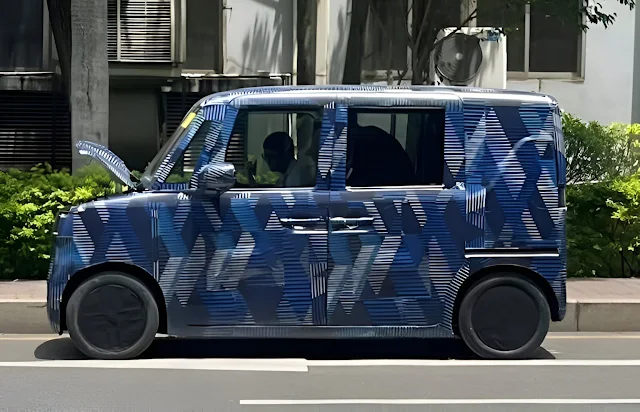This venture is part of BYD's broader effort to cater to regional demands with custom-made vehicles. The new model will conform to Japan’s kei car classification—lightweight and compact vehicles that enjoy tax breaks and insurance advantages in the country. It reflects a continued investment in BYD EVs tailored to emerging local markets.
Ultra-Affordable EV Designed to Challenge Japan’s Local Champions
According to internal plans, the microcar is expected to cost approximately 2.5 million yen (about 17,700 USD), making it even more budget-friendly than BYD’s Dolphin EV—one of the most accessible BYD car models, which retails at around 2.9 million yen (about 20,500 USD).
The car will feature a 20 kWh battery pack, delivering a WLTC-tested range of 180 kilometers. It will also support 100 kW fast charging, making it suitable for short urban commutes with fast turnaround times. The model will use BYD battery technology, including the advanced BYD Blade Battery known for safety and energy density. A heat pump-based climate system will ensure efficiency in Japan’s varied weather conditions, further optimizing its relevance in the BYD hybrid vehicles and urban EV space.
This new entrant is designed to compete directly with domestic favorites like the Nissan Sakura and Mitsubishi eK X EV. Notably, it could become the first foreign-made electric vehicle built explicitly for the kei category, a segment that accounted for 46.3% of Japan’s EV sales in 2022, up from just 2.6% the year before.
Impressive Sales Momentum Bolsters Confidence
BYD’s move into Japan follows a strong upward trajectory in both domestic and international markets. In May alone, the company sold 382,500 new energy vehicles (NEVs)—a 15.3% increase compared to the same month in 2024. These strong figures bolster confidence among those watching BYD stock forecasts and global EV market dynamics.
Sales beyond China are also rising sharply, with 88,640 units of passenger and pickup models sold abroad—an impressive 133.6% year-on-year growth. Total monthly NEV exports stood at 89,047 units, while battery deployments reached 28.48 GWh, reflecting robust infrastructure and BYD charging infrastructure capabilities.
From January through May 2025, BYD moved 1.76 million NEVs globally, marking a 38.7% rise from the previous year. Passenger car deliveries climbed to 1.74 million, while commercial units leapt more than fivefold to 27,726.
Strategic Manufacturing and Distribution Expansion Worldwide
To support its global scaling, BYD is establishing localized production facilities across Asia. Current operations include manufacturing sites in Thailand and Uzbekistan, with an additional plant under construction in Cambodia. These investments are bolstered by a fleet of dedicated car carriers to streamline overseas shipping and allow international buyers to know where to buy BYD cars with more ease.
Industry analysts predict that BYD’s export volume will continue to rise throughout 2025, driven by a diversified product line (including BYD Atto 3 specifications for family SUVs), robust dealer networks, and a growing logistical footprint.
Outpacing Tesla in Europe Signals Global Clout
A notable milestone was reached in April when BYD outperformed Tesla in European EV sales for the first time. Research firm JATO Dynamics reported BYD selling 7,231 EVs across Europe that month—up 169% year-over-year—while Tesla’s numbers fell by 49%, closing at 7,165 units. This has ignited new discussions around BYD vs Tesla, particularly in affordability, range, and safety technologies.
Solidifying Global Leadership With Tailored Innovations
Analysts believe that BYD’s approach of deploying region-specific models, like the upcoming Japan-focused micro-EV, demonstrates a deeper understanding of local market dynamics than many of its competitors. Whether consumers are asking about the best BYD car for 2025, or diving into a detailed BYD Seal review, the company is delivering on multiple fronts.
Coupled with consistent investment in intelligent vehicle technology, commercial EVs, and production scalability, the company is well-positioned for long-term profitability and global influence.
As it prepares to enter Japan’s highly nuanced kei car market with a finely tuned offering, BYD appears poised not just to participate—but to lead.






0 Comments